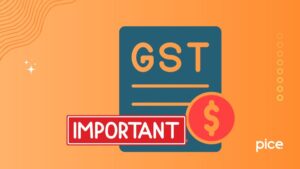GST Filing for Builders and Developers
- 22 Aug 24
- 15 mins

GST Filing for Builders and Developers
- Understanding GST
- GST on Construction Services
- GST Rates for Builders and Developers
- Reverse Charge Rules for Builders
- Reverse Charge Provisions for Builders - An Overview
- In-Depth Analysis of Reverse Charge Applicability for Builders
- GST Updates Effective from 01.04.2019 [Post Amendments via Notifications 03 to 09 – Central Tax (Rate) dated 29.03.2019]
- Tax Consequences from 01.04.2019 – Ongoing Projects Choosing the Old Scheme
- Tax Consequences from 01.04.2019 – Ongoing Projects (Not Choosing the Old Scheme) and New Projects
- Revised Taxation Scheme
Key Takeaway
- GST rates vary for affordable housing, other residential projects, and commercial projects.
- Builders must pay GST on a reverse charge basis for supplies from unregistered persons.
- Accurate classification and documentation are crucial for applying the correct GST rates.
- Proper invoicing and compliance with GST regulations are essential for all construction projects.
- The revised GST scheme aims to simplify the tax structure and promote affordable housing.
Understanding GST
All value added is subjected to the comprehensive, multi-stage, destination-based Goods and Services Tax (GST). The July 1, 2017, introduction of the GST in India has replaced many national and state taxes, therefore simplifying the indirect taxation structure. Building and development professionals who want to guarantee compliance and financial planning must know how to file GST returns.
The key for builders and developers is to understand the exact GST rates that apply to construction services, the input tax credit method, and the reverse charge rules. Each component of GST influences how developers price their projects and manage their cash flow. By staying up to speed on GST legislation and revisions, builders may assure compliance and minimize their tax bill. Additionally, understanding direct tax compliance and corporate compliances connected to building operations may aid in overall regulatory adherence.
GST on Construction Services
Developers and builders need to understand completely the significant problem of GST on construction services. Construction services under GST comprise a wide range of operations including building, complex, road, and other infrastructure works. The GST rate for construction services will depend on the kind of project—luxury or affordable homes.
For the most part, residential constructions have an 18% GST rate without the benefit of an Input Tax Credit (ITC). Without ITC, the GST rate is nonetheless reduced to 1% for developments including affordable housing. This differential rate tries to promote affordably priced residences in India. The GST rate is 5% without ITC for commercial projects and non-affordable residential developments, however.
To apply the right GST rate, builders and developers must meticulously classify their projects. They also need to know how taking ITC on their input supply would effect their total tax obligation, which may be very substantial. For effective operations and to prevent fines, proper documentation—including tax invoices and GST compliance—is crucial. Effective management of these complexity depends on knowing how to submit GST returns for builders.
Builders must pay GST in reverse charge situations when they hire input services from unregistered individuals. As such, the builder bears the cost of the tax, which, if qualified, may be subsequently claimed as credit. Still, cautious handling is needed to stay out of circumstances where credit is not allowed.
GST Rates for Builders and Developers
The GST rates for builders and developers are structured to cater to different segments of the construction industry. The rates have been designed to encourage the development of affordable housing while ensuring that luxury and commercial projects contribute their fair share of taxes. As of the latest amendments, the GST rates are as follows:
- Affordable Housing Projects: The GST rate for affordable housing projects is 1% without the benefit of Input Tax Credit (ITC). Affordable housing is defined based on the carpet area and the cost of the unit, making it essential for builders to accurately classify their projects.
- Other Residential Projects: For other residential projects, the GST rate is 5% without ITC. This rate applies to projects that do not fall under the affordable housing category and includes luxury residential developments.
- Commercial Projects: The GST rate for commercial projects is also 18% with ITC. This includes office buildings, shopping malls, and other commercial infrastructures.

Understanding these rates is crucial for builders when planning their projects and pricing their units. Accurate categorization and compliance with GST regulations ensure that builders can take advantage of the benefits provided under the GST regime while avoiding any legal complications. Knowing how to file GST returns correctly is an integral part of this compliance process.
Builders must also account for development charges, lease of land, and other construction-related expenses in their GST calculations. These costs, including registration charges and drainage charges, must be factored into the overall cost of construction and the pricing of construction flats and commercial apartments.
Reverse Charge Rules for Builders
With reverse charge, the provider is not responsible for paying GST; rather, the receiver of goods or services is. Reverse charge rules may come into play for developers and builders in a number of situations, hence it's critical to know how to submit GST returns in these situations.
Tax burden moves from the provider to the receiver under a reverse charge. This is especially important to builders who buy products and services from unregistered vendors. The builder must pay GST on the supplies obtained in such circumstances and, if qualified, claim it as an input tax credit. Maintaining the integrity of the GST system, this guarantees that tax is collected even when dealing with unregistered people.
💡If you want to pay your GST with Credit Card, then download Pice Business Payment App. Pice is the one stop app for all paying all your business expenses.
Furthermore covered by the reverse charge mechanism are certain services, such as legal services provided by an advocate or services rendered by a government or municipal body. Builders must identify these services and ensure they comply with the reverse charge provisions. Proper documentation, such as tax invoices, and maintaining accurate records are essential for compliance.
Maintaining proper documentation and understanding the applicability of reverse charge is crucial for builders. This ensures they can accurately calculate and remit GST, thereby avoiding any penalties or interest on late payments. Proper filing of GST returns, including the details of transactions subject to reverse charge, is necessary for compliance.
Reverse Charge Provisions for Builders - An Overview
Builders are supposed to comply with tax laws in transactions with unregistered suppliers and certain services via reverse charge rules. Developers and builders need to know when situations call for reverse charge and what has to be done to comply with these rules.
Builders that use the reverse charge method have to pay GST on their unregistered suppliers. In the construction industry, this is rather usual and small contractors or material suppliers may not be GST registered. In such cases, builders must calculate the applicable GST, pay it to the government, and then, if eligible, claim it as an input tax credit.
Services given by a government body or legal advice delivered by a single advocate are further services that are vulnerable to reverse charge. Builders have to file their GST returns on time and document these transactions. A precise compliance requires knowledge of the applicable tax rate for these services.
Reverse charge transactions need careful handling of accounting and record-keeping. Builders should ensure that their GST forms properly represent all such transactions and maintain careful records of them. Builders who understand how to file GST returns using reverse charge data find it simpler to maintain compliance and stay out of legal hot water.
In-Depth Analysis of Reverse Charge Applicability for Builders
Builders may find reverse charge requirements to be somewhat complicated, hence a complete knowledge of GST rules and regulations is necessary. Builders have to find out whether transactions are liable to reverse charge and make sure they follow all regulatory criteria.
Reverse charge is often applicable when builders purchase products or services from unregistered vendors. Under such circumstances, the builder is responsible for paying the GST on behalf of the supplier. This might include different labour services or building supplies, which are often obtained from unregistered, smaller suppliers. Builders have to report and include these transactions in their GST reports.
Reverse pricing on certain services, such as legal or government authority services, is another noteworthy aspect. Builders need to make sure they correctly identify these services and calculate the applicable GST. GST returns must have accurate reporting and suitable documentation to avoid discrepancies and potential penalties. Furthermore, builders should understand how ineligible credit affects their overall tax calculations.
Builders must ensure that their accounting systems are prepared to handle these types of transactions since reverse charge provisions are continually changing. Builders can manage the subtleties of reverse charge and ensure compliance with all GST regulations by regular training and advice from GST experts. This involves understanding credit reversal and managing any potential additional credit circumstances.
GST Updates Effective from 01.04.2019 [Post Amendments via Notifications 03 to 09 – Central Tax (Rate) dated 29.03.2019]
Significant changes in GST rates and provisions were introduced effective from April 1, 2019, through Notifications 03 to 09 – Central Tax (Rate) dated March 29, 2019. These amendments impacted the GST rates applicable to builders and developers, particularly for ongoing projects and new projects.
One of the key changes was the introduction of lower GST rates for affordable housing projects. The GST rate for affordable housing was reduced to 1% without the benefit of Input Tax Credit (ITC). For other residential projects, the rate was set at 5% without ITC. These changes aimed to make housing more affordable and boost the real estate sector.
Builders with ongoing projects as of April 1, 2019, had the option to continue with the old GST scheme or transition to the new rates. This choice had significant tax implications, and builders needed to carefully evaluate the financial impact of each option. For ongoing projects opting to stick with the old scheme, the cost of construction might be different due to the continued use of ITC.
The amendments also introduced specific rules for claiming ITC, reverse charge provisions, and compliance requirements. Builders must understand these changes and update their accounting and tax filing practices accordingly. Staying informed about GST updates and knowing how to file GST returns in light of these amendments is crucial for builders to remain compliant and optimize their tax liabilities.
Tax Consequences from 01.04.2019 – Ongoing Projects Choosing the Old Scheme
For ongoing projects as of April 1, 2019, builders had the option to continue with the old GST scheme. This choice meant that the GST rates and ITC provisions applicable before the amendments would continue to apply. Builders needed to assess the tax consequences of this decision carefully.
Under the old scheme, builders could avail of Input Tax Credit (ITC) on their input supplies, which could be set off against their GST liability. This was beneficial for projects with significant input costs, as it helped reduce the overall tax burden. However, the GST rates under the old scheme were higher, typically 12% for residential projects. Builders also had to manage business compliances and ensure all documentation was up-to-date.
Builders opting to continue with the old scheme had to comply with specific documentation and reporting requirements. They needed to maintain detailed records of ITC claimed and ensure proper filing of GST returns. Additionally, any changes in project plans or pricing had to be reported accurately to avoid discrepancies.
Choosing the old scheme also required builders to consider the long-term financial impact, including the potential benefits of ITC versus the higher GST rates. Consulting with tax experts and understanding how to file GST returns correctly under the old scheme was essential to making an informed decision and ensuring compliance with GST regulations.
Tax Consequences from 01.04.2019 – Ongoing Projects (Not Choosing the Old Scheme) and New Projects
For ongoing projects that did not opt to continue with the old GST scheme, and for new projects initiated after April 1, 2019, the new GST rates and provisions applied. Builders needed to understand the tax consequences of this choice to ensure compliance and optimize their tax liability.
Under the new scheme, the GST rates for residential projects were reduced to 1% for affordable housing and 5% for other residential projects, both without the benefit of Input Tax Credit (ITC). This change aimed to make housing more affordable and reduce the tax burden on buyers. However, builders lost the ability to claim ITC on their input supplies, which could impact their profitability and cash flow.
For commercial projects, the GST rate remained at 18% with ITC. Builders needed to categorize their projects accurately to apply the correct GST rate and comply with the relevant provisions. Proper classification of construction properties, including residential apartments and commercial apartments, is crucial.
The new scheme also introduced specific compliance requirements, including detailed reporting of project details, transition rules for ongoing projects, and adjustments for ITC claimed under the old scheme. Builders had to ensure proper documentation and timely filing of GST returns to avoid penalties and interest on late payments.
Understanding the tax consequences of these changes and knowing how to file GST returns under the new scheme was crucial for builders to manage their tax liabilities effectively and remain compliant with GST regulations. Additionally, builders needed to account for all project-related costs, such as development charges, registration charges, and builder charges, in their GST calculations.
Revised Taxation Scheme

The revised taxation scheme introduced from April 1, 2019, brought significant changes to the GST framework for builders and developers. These changes aimed to simplify the tax structure, promote affordable housing, and reduce the overall tax burden on the real estate sector.
One of the major changes was the introduction of lower GST rates for residential projects, with 1% for affordable housing and 5% for other residential projects, both without Input Tax Credit (ITC). This shift aimed to make housing more affordable and encourage homebuyers. However, the removal of ITC meant that builders had to absorb the input costs, potentially impacting their pricing and profitability.
For commercial projects, the GST rate remained at 18% with ITC, allowing builders to set off their input costs against their tax liability. This provided some relief for commercial developers, enabling them to manage their cash flow more effectively.
The revised scheme also included specific rules for transitioning ongoing projects, reporting requirements, and compliance with reverse charge provisions. Builders needed to stay informed about these changes and update their accounting and tax filing practices accordingly. This includes understanding the implications of service tax for transitional projects and managing any exempt supplies within their project scope.
Understanding the revised taxation scheme and knowing how to file GST returns under the new provisions was essential for builders to navigate the complexities of the GST framework, ensure compliance, and optimize their tax liabilities. Consulting with GST experts and leveraging technology for accurate record-keeping and timely filing of returns could help builders manage these challenges effectively. This includes ensuring compliance with E-way Bill requirements for the transportation of goods within the construction project and accurately reporting all taxable and exempt supplies.
Overall, the revised GST scheme requires careful planning and diligent compliance from builders and developers. By understanding the nuances of GST for construction and maintaining thorough documentation, builders can navigate the GST landscape efficiently and avoid potential pitfalls.
 By
By 















